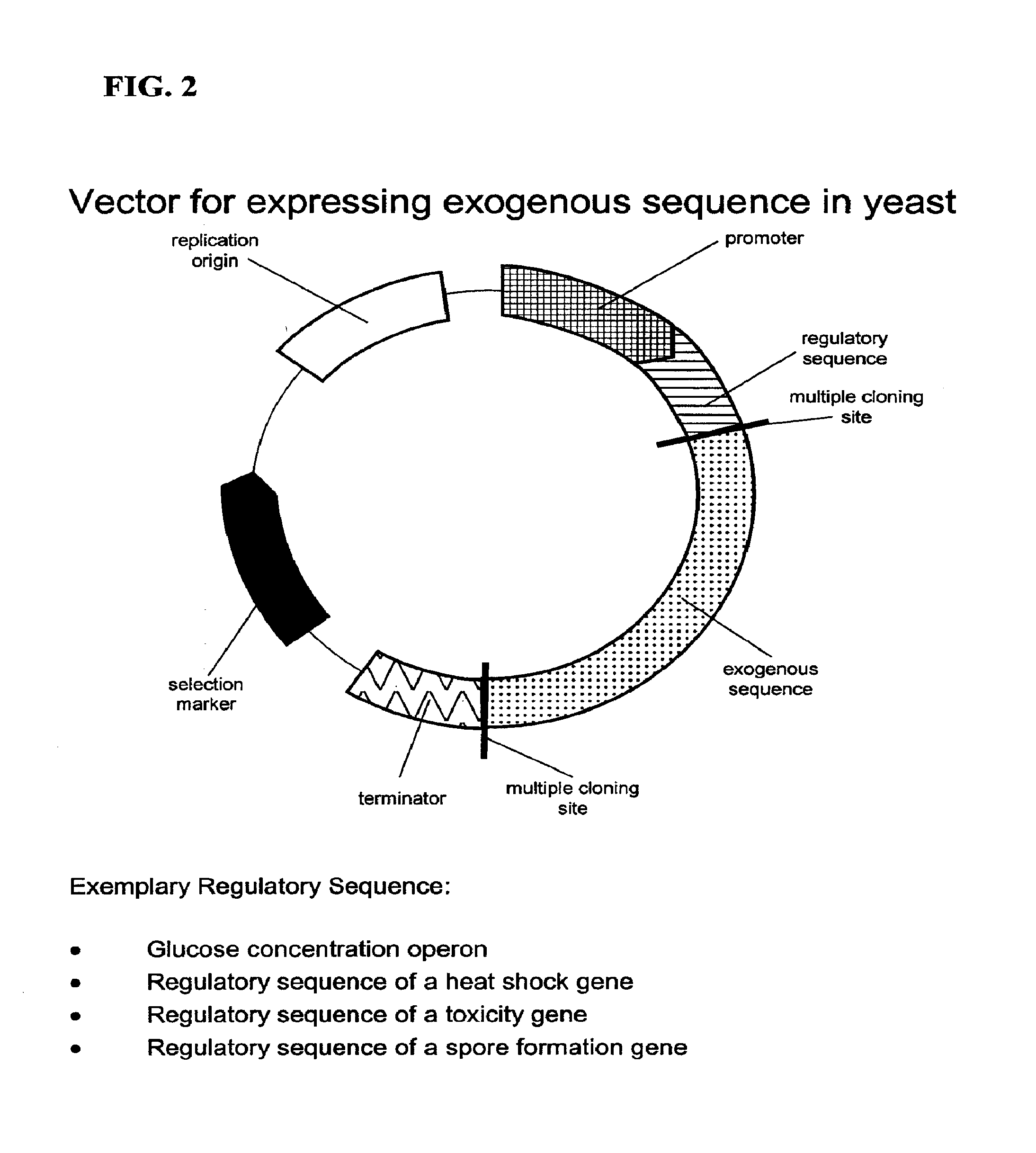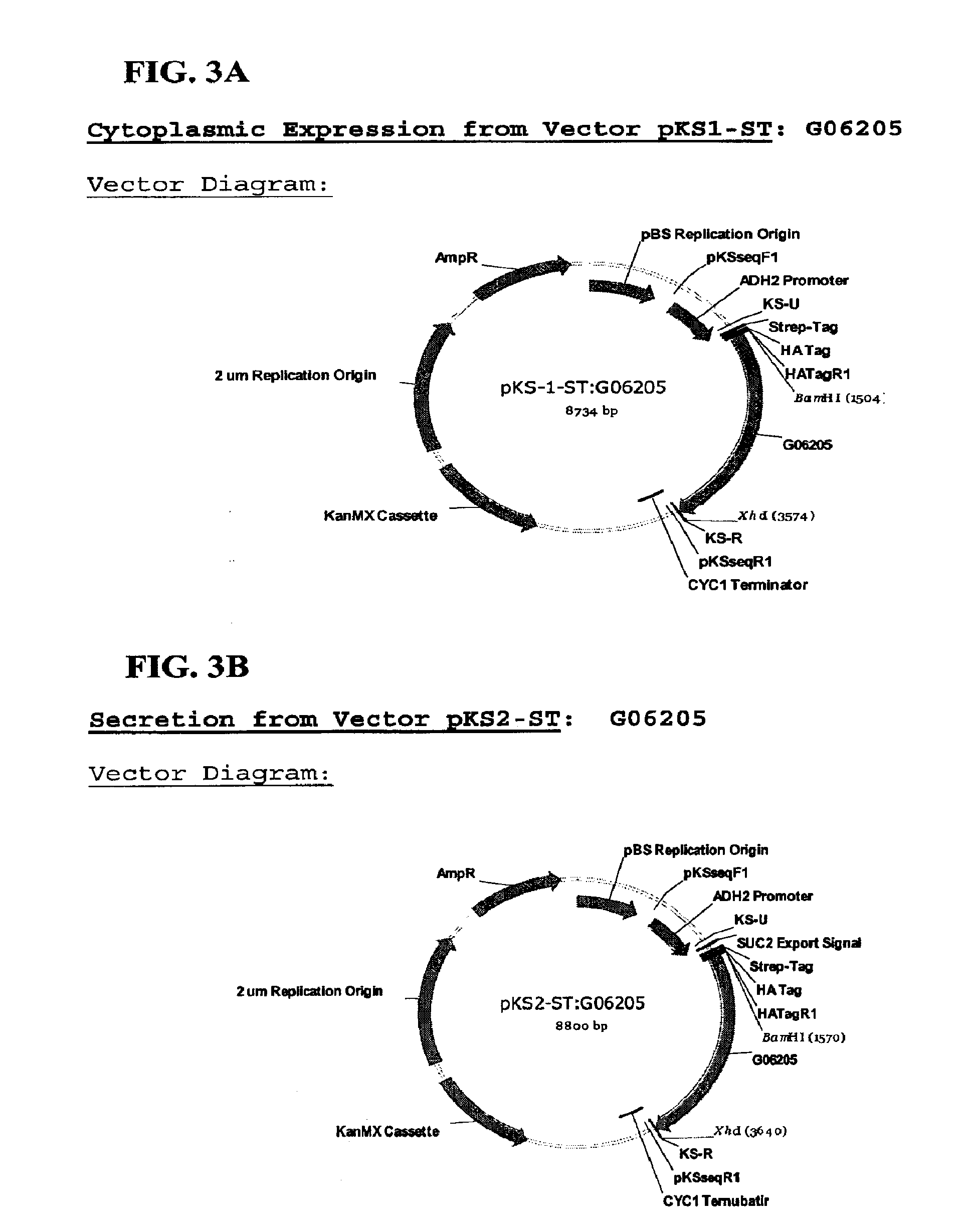Compositions and Methods for Producing Fermentation Products and Residuals
a technology applied in the field of compositions and methods for producing fermentation products and residuals, can solve the problems of low initial investment, two to four times less capital costs per gallon, and the current ethanol industry could be significantly affected, so as to achieve greater commercial value and increase commercial value
- Summary
- Abstract
- Description
- Claims
- Application Information
AI Technical Summary
Benefits of technology
Problems solved by technology
Method used
Image
Examples
example 1
Construction of pKS-1-ST:G060205
[0242]A vector designated pKS-1-ST:G060205 that contains an open reading frame coding for a proline-specific endopeptidase from flavobacterium meningosepticum (GO6205) was constructed to express the endopeptidase in the cytoplasm of a yeast cell. The endopeptidase is linked in-frame with a Strep-Tag for rapid protein purification and an HA-Tag for ease of detection by Western Blotting. The endopeptidase sequence is subcloned into the pKS-1-ST backbone via the restriction sites of BamHI and Xhd. See FIG. 3A for additional sequence components contained in pKS-1-ST:G060205. In particular, the pKS-1-ST vector background carries a KanMX resistance marker, an ADH2 promoter that controls expression of the proline-specific endopeptidase gene. The ADH2 promoter is typically inactive during the early growth phase of the yeast cells. Once the cells reach early stationary phase of the growth curve, glucose is depleted from the medium, e.g., the YPD Broth, thereby...
example 2
Construction of PKS-2-ST:GO6205
[0243]A vector designated pKS-2-ST:GO60205 that contains an open reading frame coding for a secreted proline-specific endopeptidase from flavobacterium meningosepticum (GO6205) was constructed. The endopeptidase is operably linked to a Suc2 leader sequence to direct the synthesized endopeptidase out of a yeast cell. In addition, the endopeptidase sequence is linked in-frame with a Strep-Tag for rapid protein purification and an HA-Tag for ease of detection by Western Blotting. The endopetidase sequence is subcloned into the pKS-2-ST backbone via the restriction sites of BamHI and Xhd. See FIG. 3B for additional sequence components contained in pKS-2-ST:G060205. In particular, the pKS-2-ST vector background carries a KanMX resistance marker, an ADH2 promoter that controls expression of the proline-specific endopeptidase gene. The ADH2 promoter is typically inactive during the early growth phase of the yeast cells. Once the cells reach early stationary p...
example 3
Cytoplasmic Expression of Proline-Specific Endopeptidase from Vector pKS-1-ST:GO6205
[0245]Yeast cells (saccharomyces cerevisiae strain ATCC 4132) that are highly efficient in the production of ethanol were transformed with the pKS-1-ST:GO6205 vectors containing a gene encoding for proline-specific endopeptidase, a large, lysine rich protein. The amino acid sequence of the proline-specific endopeptidase is shown in FIG. 4A. In addition to the endopepdidase, the expressed sequence contains a Strep-Tag, an HA epitope, and amino acid residues corresponding to the BamHI restriction site. The sequence was modified at two positions (shown in triangles in FIG. 4A), where the wildtype serine and histidine residues have been replaced with alanine in order to inactivate the peptidase activity.
[0246]The transformed yeast cells were allowed to grow in standard growth medium. Lysates from the control cells transformed with the backbone vector pKS and the vector pKS1:GO6205 were analyzed via SDS-P...
PUM
| Property | Measurement | Unit |
|---|---|---|
| volume | aaaaa | aaaaa |
| fermentation time | aaaaa | aaaaa |
| concentration | aaaaa | aaaaa |
Abstract
Description
Claims
Application Information
 Login to View More
Login to View More - R&D
- Intellectual Property
- Life Sciences
- Materials
- Tech Scout
- Unparalleled Data Quality
- Higher Quality Content
- 60% Fewer Hallucinations
Browse by: Latest US Patents, China's latest patents, Technical Efficacy Thesaurus, Application Domain, Technology Topic, Popular Technical Reports.
© 2025 PatSnap. All rights reserved.Legal|Privacy policy|Modern Slavery Act Transparency Statement|Sitemap|About US| Contact US: help@patsnap.com



